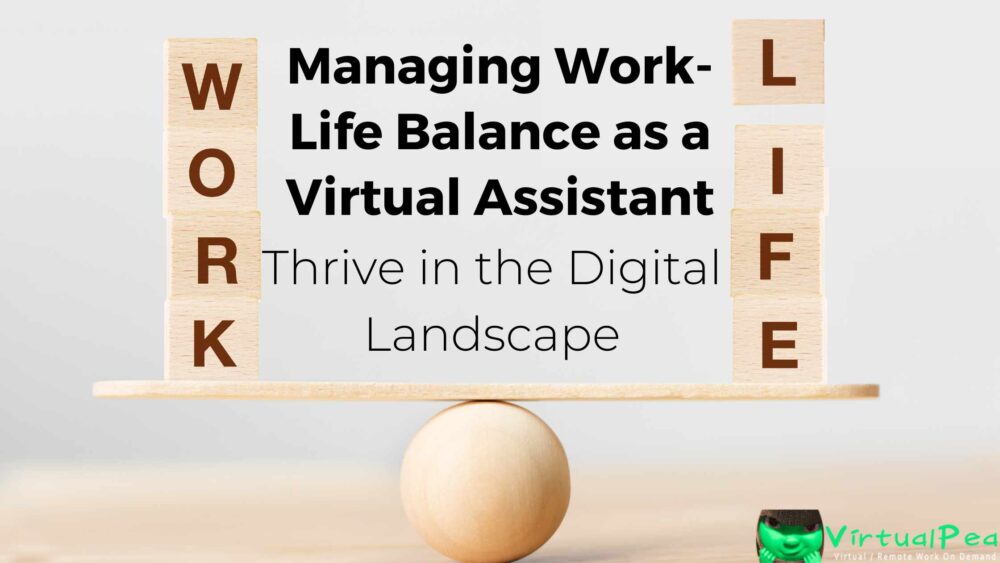
As a virtual assistant, achieving a healthy work-life balance can be a challenge. The flexible nature of remote work often blurs the lines between professional and personal life. However, it’s essential to prioritize your well-being to avoid burnout and maintain a fulfilling career. In this article, we will explore practical strategies for managing work-life balance as a virtual assistant. By implementing these tips, you can establish boundaries, manage your time effectively, and take care of yourself, leading to increased productivity and overall satisfaction.
1. Set Clear Boundaries
Establishing boundaries is crucial for maintaining work-life balance. Clearly define your working hours and communicate them to clients and colleagues. Avoid checking emails or working outside of these designated hours to preserve personal time. Create a physical or virtual workspace that signals when you’re “on” or “off” duty to help differentiate between work and leisure.
2. Prioritize and Schedule Tasks
Effective time management is key to balancing work and personal life. Prioritize tasks based on importance and urgency. Use productivity tools or techniques, such as time blocking or the Pomodoro technique, to structure your workday and ensure focused periods of productivity. Set realistic goals and deadlines to avoid overcommitting and feeling overwhelmed.
3. Practice Self-Care
Taking care of yourself is vital for maintaining work-life balance. Incorporate self-care activities into your daily routine, such as exercise, meditation, or hobbies. Allocate time for breaks throughout the day to recharge and rejuvenate. Establish healthy boundaries with technology, ensuring you disconnect from work and engage in activities that bring you joy and relaxation.

4. Delegate and Outsource
As a virtual assistant, you have the freedom to delegate or outsource tasks that don’t require your expertise. Identify areas where you can leverage the support of other professionals or virtual assistants. Delegating administrative or repetitive tasks allows you to focus on high-value activities, reducing stress and improving work-life balance.
5. Communicate Effectively
Maintain open and honest communication with clients and colleagues regarding your availability and boundaries. Set realistic expectations regarding response times and deliverables. Clearly communicate your working hours and any potential limitations in advance. This proactive communication fosters understanding and respect, ensuring a healthy work-life balance.
6. Learn to Say No
As a virtual assistant, it’s essential to recognize your limitations and learn to say no when necessary. Overcommitting yourself can lead to burnout and imbalance. Evaluate requests or projects carefully, considering your capacity and priorities. Politely decline opportunities that don’t align with your goals or would negatively impact your work-life balance.
Achieving work-life balance as a virtual assistant requires intentional effort and self-awareness. By setting clear boundaries, managing your time effectively, practicing self-care, delegating tasks, communicating openly, and learning to say no, you can strike a harmonious balance between your professional and personal life. Prioritizing your well-being not only enhances your productivity but also ensures long-term success and satisfaction in your virtual assistant career. Embrace these strategies and take proactive steps towards a healthier work-life balance.
